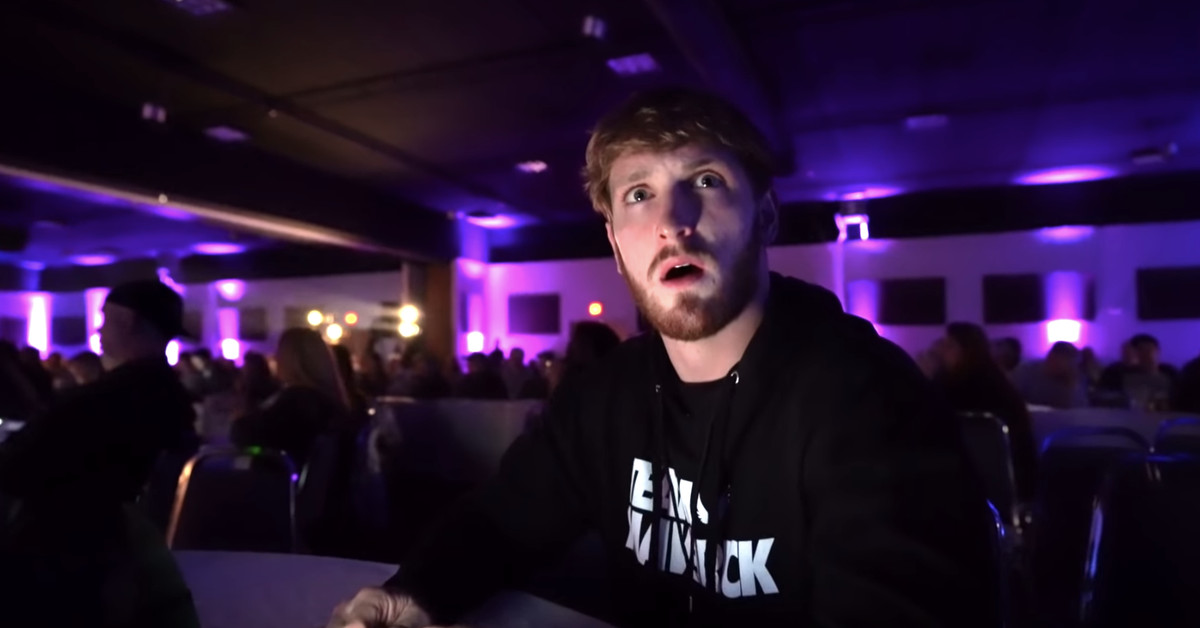Logan Paul’s upcoming flat Earth doc demonstrates YouTube’s double standard

As YouTube tries to crack down on conspiracy theories, some of its biggest creators are using them to bring in views and ad revenue.
Logan Paul released a trailer today for a documentary-style video that goes inside a flat Earther convention, which ends with Paul stating, “I think I’m coming out of the flat Earth closet.” The video arrives just over a month after Shane Dawson, another of YouTube’s largest creators, released a two-part, three-plus hour series exploring a number of different conspiracies, such as that the California wildfires were intentionally set.
Both creators’ conspiracy videos brought in huge numbers of viewers. In just one day, the trailer for Paul’s conspiracy video has brought in close to 1 million views. Dawson’s two videos collectively have more than 62 million views. While both creators skirt around outright stating the conspiracies they’re covering are real, they each play into the madness around those theories and present them as views worth exploring, rather than outright falsehoods.
Less than two months ago, YouTube said it would begin to limit the reach of misinformation, including videos “claiming the earth is flat.” Yet in a new statement to The Verge, YouTube declined to comment on whether Paul’s video would be impacted by those recommendation changes, and said that the video wouldn’t run with an information panel to outright dispel the flat Earth conspiracy theory. The company is hoping to roll out more information panels for more topics in the future, which would include flat earth videos regardless of opinion, but could not confirm if it would appear on Paul’s.
YouTube has made it clear that conspiracy theory documentaries, even those that play into the conspiracies like Dawson’s and Paul’s, are still acceptable on the site. Dawson’s videos have multiple ads, and they appeared on YouTube’s front page when they were first released. The only place Dawson’s videos didn’t show up was YouTube’s trending section, but even that’s a plight that caught that attention of YouTube CEO Susan Wojcicki, who agreed to sit down with Dawson and to discuss how the section works.
Dawson and Paul are both part of Google’s AdSense program, which means they earn advertising revenue for their videos. YouTube has been careful about what videos get to run ads, and it has guidelines for both advertisers and creators that don’t seem to apply here.
Even if Paul and Dawson make light of the conspiracy theories, this style of humor can still be dangerous. Know Your Meme editor Matt Schimkowitz spoke to The Verge in 2017 about flat earth memes when they became a viral fixation on platforms like Reddit. Schimkowitz said that flat earth memes — or a documentary like Paul’s — “can attract people who are looking to believe in these kinds of things, looking for things to confirm what they believe.”
Watching these videos also risks sending viewers down a recommendation rabbit hole that ends with much more blatant conspiracy theory peddling. Paul’s flat Earth trailer leads to recommendations for a National Geographic video on the subject. National Geographic calls out the theory as inaccurate, but it only takes a couple more clicks before harmful flat Earth videos appear.
Conspiracy theorists promote doubting experts, Schimkowitz said at the time, which can lead to bigger harms like denying climate change. “I think it is important to maintain a level of concern about [conspiracy theorists],” Schimkowitz said. “They do things that harm society as a whole, like negate or dilute scientific reason.”
The recommendation problem is something that YouTube is well aware of, and one that executives have reiterated they want to fix. But without acknowledging the role top creators play in the continued exposure of bad actors, it’s a problem that YouTube doesn’t seem likely to fix.
Update, March 11th at 8:05 PM ET: The story has been updated to include further explanation from YouTube on how it plans to roll out additional information panels in the coming months to combat misinformation.
*** This article has been archived for your research. The original version from The Verge can be found here ***


